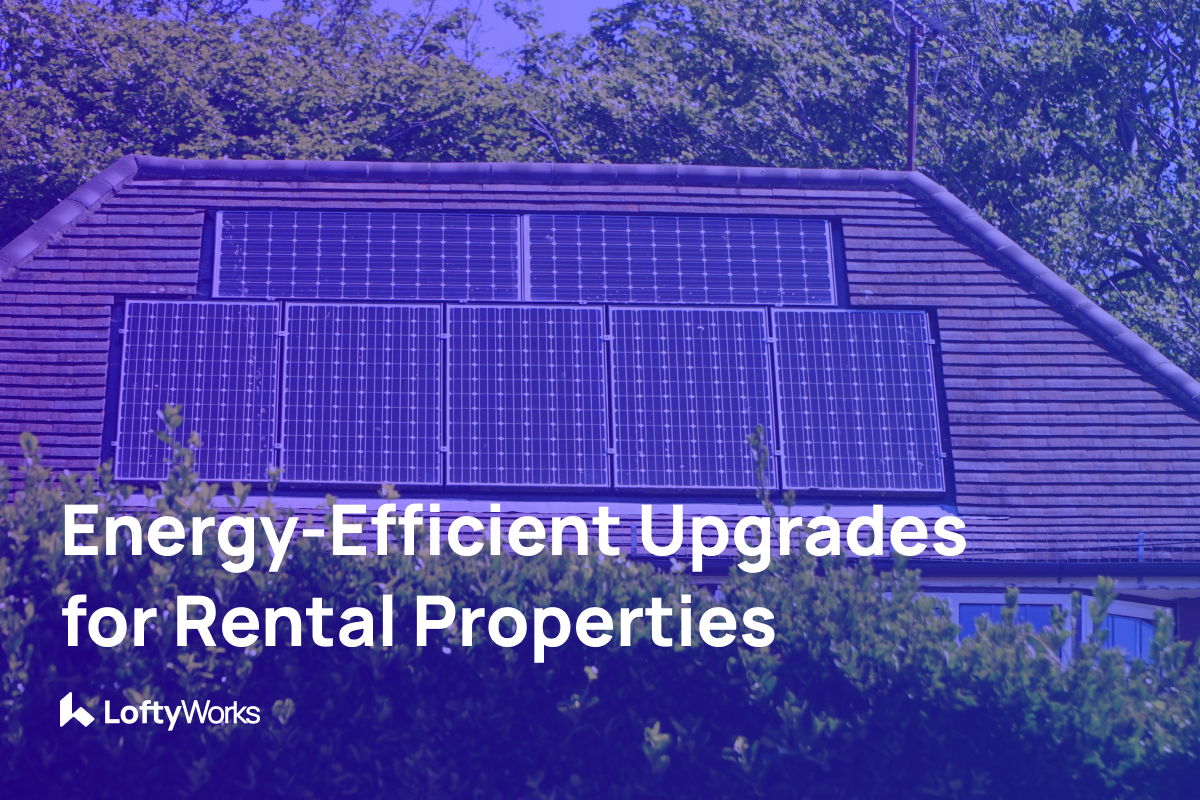Energy-Efficient Upgrades for Rental Properties

Regardless of who covers the expenses, everyone gains from helping tenants in cutting down their energy costs. Take a moment to review our guide and tips for renters, then share these valuable insights with your landlords/tenants.
Our guide contains key strategies designed to assist landlords in boosting property appeal, trimming energy expenses, and adapting to upcoming energy efficiency standards. Ensure your rental portfolio is both sustainable and enticing. Explore now for practical insights to optimise your property’s efficiency and enhance tenant satisfaction.
Typical Domestic Energy Consumption
The annual energy bills for a typical household in the UK will be approximatel £1,928 between Jan, 1 and Mar 31, 2024. Compared to the preceding three-month price cap this is an increase of £94.
The energy price caps for typical domestic consumption values (2023) between October 2023 to March 2024 are shown below:

Understanding Energy Performance Certificates (EPCs)
The correlation between EPC rating and monthly rental is a critical consideration, especially in the current scenario where the housing stock in the UK is limited. A higher EPC rating signifies a more energy-efficient property, which often translates into lower utility bills for tenants. As tenants increasingly prioritise cost-effectiveness and sustainability, properties with better EPC ratings are likely to command higher demand, allowing landlords to potentially justify higher monthly rentals.
Landlords can start by leveraging Energy Performance Certificates (EPCs) to assess their property’s energy efficiency. EPCs provide a rating from A (most efficient) to G (least efficient), with landlords required to obtain a new EPC every 10 years. A good EPC rating not only reduces tenant energy bills but also enhances the property’s appeal and comfort.
All tenants must be provided with a copy of the property’s EPC when they move in. You can find it via the Energy Performance of Buildings Register. Check to see if yours is up to date.
Why improve the energy rating of your properties?
If you have landlords that are renovating old properties, this is the right time to improve the energy rating. The landlord can decide either to do the minimum upgrades to meet the minimum EPC rating needed or make further improvements for the longer term. The government still offers home energy grants – click this link to learn what exactly can be done. And make sure landlords are taking full effect of this.
For each recommendation you will see:
- an estimated cost of making the improvement
- how much you could save on your bills
- next steps if you want to make improvements
When you receive an updated report, read through the recommendations in your property’s EPC. Landlords in England and Wales must spend up to £3,500 on recommended improvements to meet Minimum Energy Efficiency Standards. Some properties may be exempt due to affordability, mortgage lender refusal, or structural issues.
Exemptions last for five years. If the recommended improvements exceed £3,500, you can apply for higher-cost exemption via the PRS Exemptions Register.
Best energy savers
While the biggest energy savers will depend on the property type, typical examples include:
- Insulation (e.g. solid wall, cavity wall or loft insulation)
- Heating systems (energy efficient boiler)
- Draught-proofing gaps and cracks (Windows, Doors, Chimneys, Floorboards and skirting boards, Loft hatches, Pipework, Old extractor fans, Cracks in walls)
- Double glazed windows or energy efficient doors
- Regular maintenance of HVAC systems (heating, ventilation, air conditioning)
- Renewable energy systems (solar panels, heat pumps)
Many of these improvements also reduce the incidence of mould – which is one of the most common complaints we receive from tenants of older properties that LoftyWorks’ outsourced staff manage on behalf of our clients at this time of year (see also the more detailed section below).
Smaller improvements include:
- Upgrading to LED light bulbs

Upgrading traditional lighting fixtures to energy-efficient LED bulbs is a simple yet impactful step. LED bulbs last longer, consume less energy, and emit a more natural light, creating a more comfortable atmosphere for tenants.
- Installing a smart meter
Installing a smart meter is a great proactive move you can make to improve energy efficiency, offering real-time monitoring, accurate billing, and the ability to identify and reduce energy consumption through data-driven insights, ultimately contributing to reduced bills and greater environmental sustainability.
- Smart Thermostats for Temperature Control
Implementing smart thermostats allows property managers to remotely monitor and control heating and cooling systems. This not only provides convenience but also enables the optimisation of energy consumption.
Insulation Importance
Bearing in mind the example of landlords renovating older properties, a few more words about the importance of insulation for preventing moulds. This is one of the biggest issues we see in older properties which LoftyWorks staff manage on behalf of our clients.
Improving insulation in older houses is key not only for enhancing energy efficiency but also tackling the persistent issue of mould. Here are some practical tips:
- Seal Gaps and Cracks: Identify and seal any gaps or cracks in walls, windows, and doors. This not only prevents drafts but also helps maintain a consistent indoor temperature, reducing the likelihood of condensation and mould.
- Upgrade Windows and Doors: Consider upgrading to double-glazed windows and well-sealed doors. This not only improves insulation but also minimises the transfer of cold and damp air into the property, creating a more comfortable living environment.
- Invest in Wall Insulation: Older houses often lack proper wall insulation. Investing in cavity wall insulation or external cladding can significantly improve thermal efficiency, reducing the risk of moisture build-up and mould formation.
- Install Roof Insulation: Adequate roof insulation is essential for maintaining a balanced temperature within the property. Insulating roof spaces prevents heat loss and minimises occurrence of cold surfaces, which can contribute to mould growth.
- Ventilation Solutions: Ensure proper ventilation in areas prone to dampness, such as bathrooms and kitchens. Installing extractor fans or improving existing ventilation systems can help expel excess moisture, reducing the conditions favourable for mould.
- Use Moisture-Resistant Materials: When renovating or making improvements, opt for moisture-resistant materials in areas prone to dampness. This includes using mould-resistant drywall and anti-mould paint to create a protective barrier against mould development.
- Monitor Indoor Humidity: Keep an eye on indoor humidity levels. Utilise dehumidifiers to maintain optimal humidity levels (should be between 30-50%), creating an environment inhospitable to mould growth.
- Regular Property Maintenance: Implement a proactive maintenance schedule to address any leaks, water damage, or issues promptly. Timely repairs prevent moisture build-up and contribute to a healthier living space.
Helping Tenants Save Energy and Money
Landlords can assist tenants in saving energy and money by sharing energy-saving tips and guides and implementing the above mentioned recommendations in their properties. Why not also use Simple Energy Advice’s energy efficiency calculator, to explore available home energy grants, and make improvements like insulation, energy-efficient heating systems, and double-glazed windows?
By implementing the mentioned upgrades, landlords and property managers can not only reduce operating costs but also position their properties as attractive, modern, and sustainable choices for discerning tenants.


